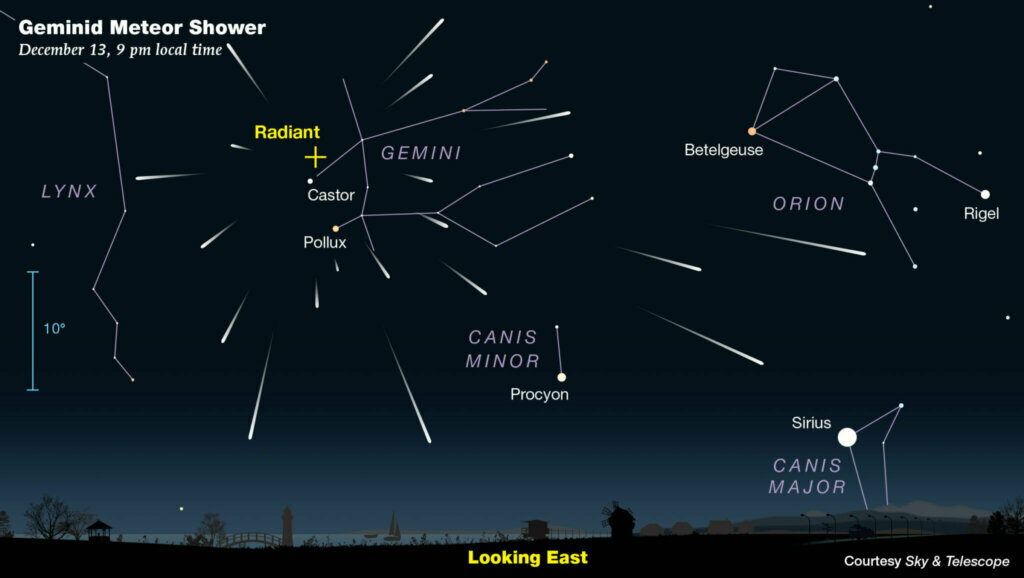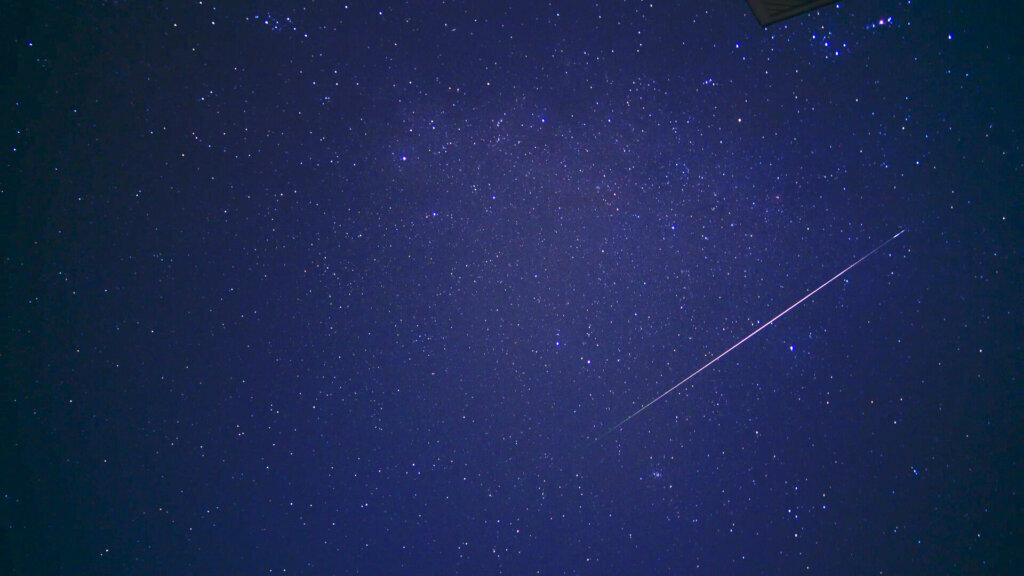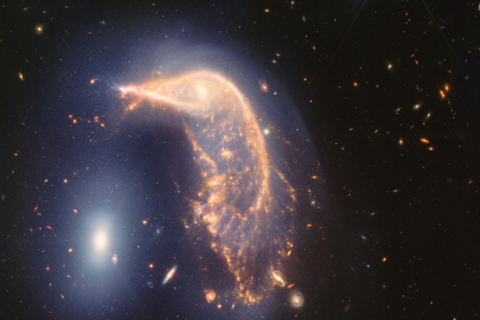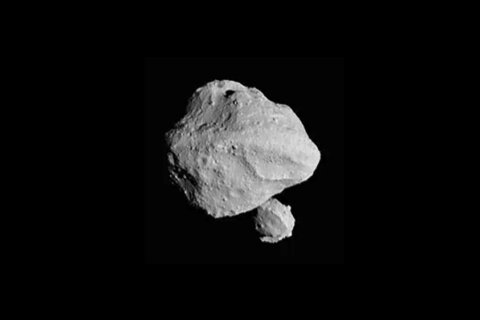
Just like this time last year, the D.C. area will likely have cloudy skies on the night of Dec. 13-14, the peak of the Geminid meteor shower.
But, all is not lost, as the American Meteor Society says, “If your weather appears to be overcast on the peak night, the two nights prior and the one night after the peak will also produce impressive activity.”
AMS also says that, “The prime hours to watch Geminid activity are between 11 p.m. and 4 a.m. local standard time.”
Sky and Telescope predicts that “the Geminids should peak around 8 p.m. EST (5 p.m. PST) on Dec. 13.”
Similar to AMS, Sky and Telescope says, “So, should the night of Dec. 13-14 be cloudy, it’s worth casting your gaze skyward the night before and after the peak, when you could pick up around 30 or 15 meteors per hour, respectively.”
As I write this, the current National Weather Service forecast has cloud cover in Central Virginia at 49%. Not great, but it isn’t 100% either.
The best thing to do is monitor the night skies on Friday, Saturday and Monday as it is forecast to be partly cloudy for some portions of those nights. To get detailed weather forecasts, including sky cover percentages for your location, check the National Weather Service. Just provide your ZIP code, click “Go” and then use the “Tabular Forecast” to get sky cover percentages.
Each year, the Geminids reliably produces a large number of meteors per hour (75 to 100+) in a dark sky, with many of them being bright enough to be classified as fireballs — a meteor that is brighter than the planet Venus. To get an idea how bright this is, you can see Venus in the southeast sky before dawn. Bottom line: These fireballs are bright.
Each year at this time, Earth encounters a debris stream of rock particles made by Asteroid 3200 Phaethon as it orbits the sun.
The Geminids are the only major meteor shower caused by a rock comet. All other meteor showers, except the Quadrantids (caused by an asteroid), are due to cometary debris.
There are about a dozen major meteor showers with a number of minor showers that take place each year.
Our very own Naval Research Laboratory has been able to image the asteroid trail that produces the Geminid meteor shower.
As Earth moves in its orbit around the sun each year, it collides with this rocky debris stream, and particles hit our atmosphere at about 80,000 mph to become “shooting” or “falling stars.”
The Geminids are believed to be brighter than other meteor showers because they involve larger and heavier debris than normal cometary dust and penetrate deeper into the atmosphere.
The best place to see the Geminids is at a location far away from lights and with no obstructions such as trees and buildings. If you are a city dweller, you still may see the brightest Geminids, as long as you are not staring into a streetlight or nestled in among tall buildings.

Out in the country — or along the beach or on a cruise ship — is the best place to be.
Best of all, you do not need any equipment or know how to enjoy this sky-show spectacle. You just need to find a place where you can put a lounge chair or sleeping bag to see as much of the sky as possible.
The shower will continue all night before dawn. Your best bet for enjoying the shower is to be comfortable, which means staying warm. The Geminids can appear anywhere in the sky.
Share viewing the shower with family, friends or your significant other. Food and hot beverages are an added plus that contributes greatly to comfort and enjoyment.
It’s a week until winter, making it cold and maybe cloudy. But it’s still worth trying to see the best producing meteor shower of the year as some form of escape from 2020.
Follow my daily blog to keep up with the latest news in astronomy and space exploration. You can email me at skyguyinva@gmail.com.







